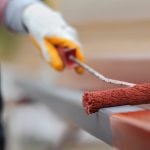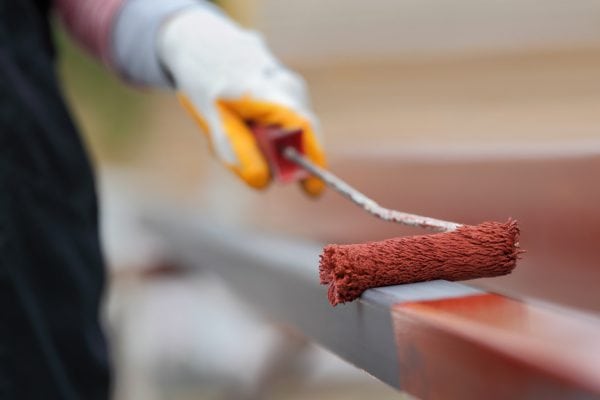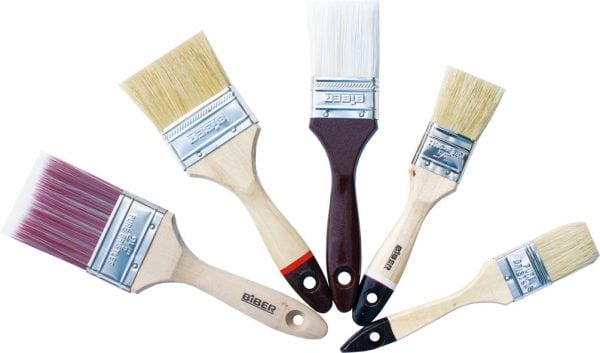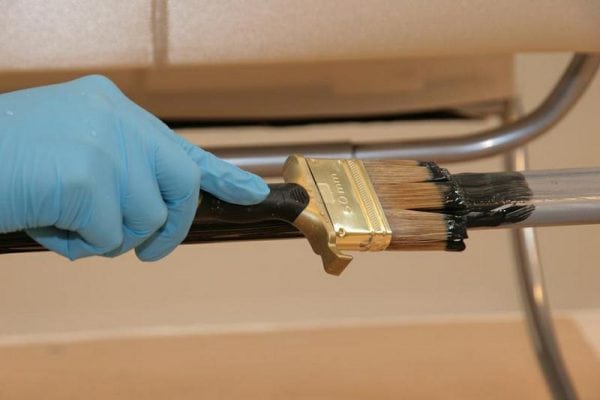The indicator of paint consumption is an important factor in the preparation of cost estimates. The norms of paint consumption for metal depend, first of all, on the type of painted metal structures, as well as the qualitative characteristics of the material.
It is customary to subdivide metal products into three groups depending on the type of structural material:
- black iron;
- galvanized steel;
- non-ferrous metals.
Each group of metals is characterized by certain working properties, and therefore the need for coloring in each case is different. For example, non-ferrous metals rarely need to be painted, but ferrous iron needs to be painted, because otherwise adverse environmental factors will lead to the development of corrosion processes.
Most often, for painting metal structures, oil and alkyd paints are used. These types of colorants are best suited to protect the metal from rust and aggressive environments.
to contents ↑The right brush choice
From the choice of a brush, the consumption of paintwork material depends not least. You have to choose between brushes with synthetic or combined bristles. The brush may have a long or flat handle.
A brush with natural bristles is better suited for working with an organic solvent. Its pile absorbs the coloring matter well and evenly distributes the composition on the surface. However, for water-dispersion paints, natural bristles are not the best option, because it is too quickly saturated with water and becomes shapeless, which creates inconvenience when painting. Unlike natural, artificial bristles do not absorb liquid and retain their original shape during the working process.
to contents ↑Note! A high-quality brush is characterized not only by good absorption, but also by the same paint return.
Hiding power paint
The consumption rate of the paint material is largely determined by its hiding power. An example is the glass plate on which the paint is applied. At the moment when the paint layer makes the plate completely opaque, we can assume that the plate is covered. In other words, hiding power is the amount of paint that you need to spend on completely painting a particular surface area. The less paint is spent per unit area, the higher the hiding power.
Note! Even with an excellent hiding power, a single layer is not enough to reliably protect the metal from rust.
The paintwork is also influenced by its color. In particular, the approximate consumption of white enamel is 110 grams per 1 m2, while black enamel needs no more than 60 grams per m2. Coverage rates are indicated by manufacturers on the packaging. To calculate the estimated paint consumption, you need to multiply the hiding power by the surface footage, and multiply the result by the number of layers.In this case, the actual consumption of paint and varnish, most likely, will be slightly larger, which is facilitated by the following factors:
- surface relief, roughness on it;
- tool used for application;
- qualification of the painter.
Foreign and domestic manufacturers usually indicate different consumption rates for packaging. Western companies write about consumption in grams or kilograms per square meter, while Russian companies focus on liters.
to contents ↑Example for calculating paint loss
To calculate the consumption rate, you need an indicator of dry residue (mass fraction of non-volatile components). It should be noted that in this way only the theoretical consumption of the paint material can be established, since in this case additional factors are not taken into account.
The main losses during painting relate to the so-called “obvious losses” (if the desired indicator is not provided with a layer thickness) and “actual losses” (if paintwork is wasted).
A more accurate result can be obtained by using the following formula:
Mass fraction of nonvolatile substances = TSP x 100 / TMP
Legend:
- TSP - the thickness of the final layer of dry film;
- TMP is the initial wet film thickness.
A significant part is the real loss that occurs due to dripping paint from a brush or roller. Most of these losses can be avoided if you carefully work with the paint material. However, when working with a spray gun, losses during the application of a coloring matter cannot be avoided, since the level of material consumption is affected not only by the skill of the painter, but also by weather conditions and the shape of the surface. As a result, when spraying, the paint consumption rate is slightly higher.
Losses are usually expressed as a percentage:
- for closed rooms with good air circulation - up to 5%;
- for open spaces in the absence of wind - from 1 to 5%;
- for open spaces in windy weather - over 20%.
Before applying paint, it is recommended to pay special attention to surface preparation. High-quality preparatory measures are the key to the economical consumption of paint and varnish material.







